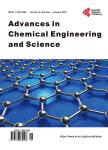Effect of Laser Ablation on the Physicochemical Properties of Microwave-Assisted Synthesized AgNP in Aloe Vera (Aloe Barbadensis) Extract
Effect of Laser Ablation on the Physicochemical Properties of Microwave-Assisted Synthesized AgNP in Aloe Vera (Aloe Barbadensis) Extract作者机构:Food Engineering Laboratory Department of Food and Animal Sciences A-101 Carver Complex Thomas Wing South Alabama A&M University Normal AL USA Department of Physics Chemistry & Mathematics Alabama A&M University Normal AL USA
出 版 物:《Advances in Chemical Engineering and Science》 (化学工程与科学期刊(英文))
年 卷 期:2017年第7卷第4期
页 面:393-407页
学科分类:1002[医学-临床医学] 100214[医学-肿瘤学] 10[医学]
主 题:Laser Ablation Silver Nanoparticles Microwave Aloe Vera FTIR
摘 要:Biosynthesis of silver nanoparticles (AgNP) using biomolecular extracts of plant origin is of interest to many researchers because of their potential to produced stable product. It is hypothesized that laser ablation of the AgNP in solution will enhance the biomolecules such as aliphatic amines, alkenes (=C-H), alkanes (C-H), alcohol (O-H) and unsaturatedesters (C-O) in the Nano emulsion. Hence, the objective of this study was to evaluate the effect of laser oblation on the physicochemical properties and stability of AgNP reduced with Aloe vera (Aloe barbadensis ). Experiments were conducted with the pre-made AgNP were subjected to the three laser oblation treatments: 1) Control no laser treatment of AgNP, 2) Laser ablation treatment for 5 minutes and 3) Laser ablation treatment for 10 minutes. The results of the analysis show that laser oblation treatment has significant effect (p 0.01) on the concentration of AgNP. The intensity of the absorption peak significantly (p 0.01) increases with laser exposure time. While 214 ppm was observed with no laser treatment, 224 and 229 ppm increase of concentration was observed when laser treated for 5 and 10 min. The rates of reaction of restructuring the particles sizes were 0.384, 0.408 and 0.4288 min-1 at different laser exposure treatments times 0, 5 and 10 min, respectively. The FTIR results show significant (p 0.05) increase in biomolecules concentration of aliphatic amines, alkenes (=C-H), alkanes (C-H), alcohol (O-H) and unsaturatedesters (C-O).



